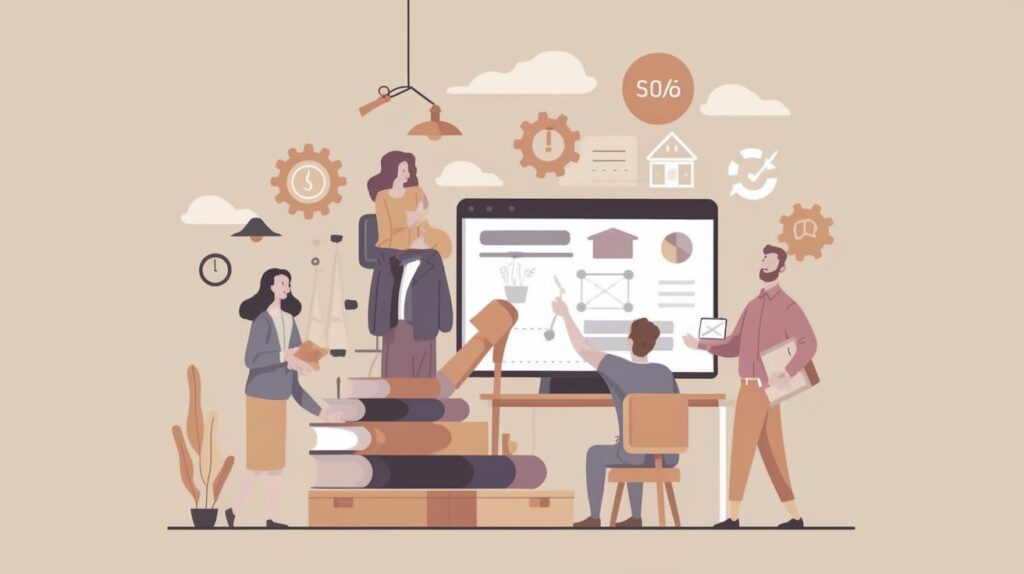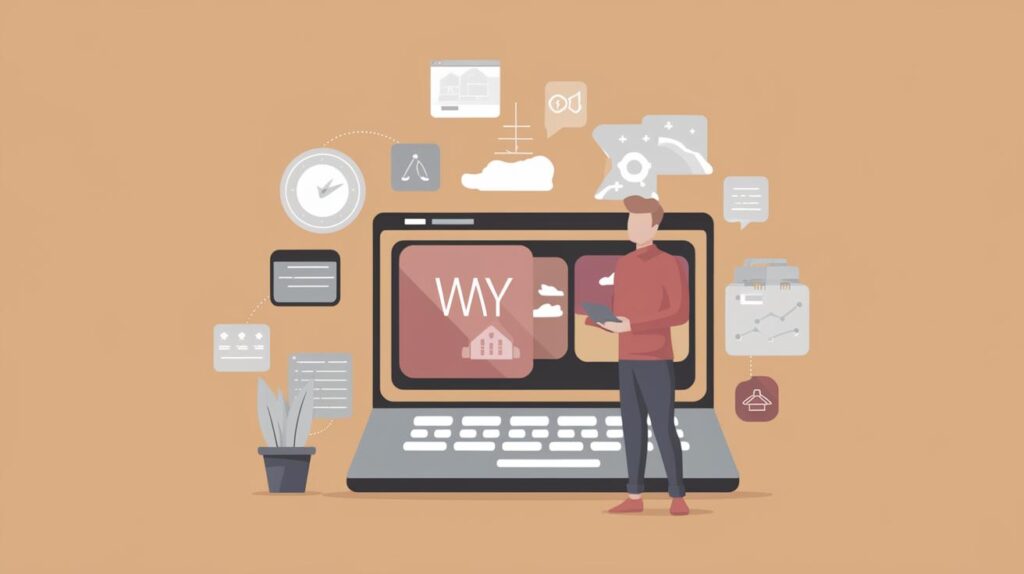App Maintenance: A Comprehensive Guide
Maintaining an app is a continuous process that plays a crucial role in its success. In this guide, we will explore the facets of app maintenance, from understanding its costs to implementing best practices. Beginning with the context of app maintenance expenses, we’ll delve into the importance of updating apps, providing exceptional user experiences, and addressing security concerns. We’ll also discuss the different types of app maintenance and the typical costs associated with hosting, analytics, bug fixing, and customer support. By the end, you will learn valuable lessons on partnering with experienced technology providers to ensure your app remains relevant and effectively meets user needs.
App Maintenance Cost – Setting the Context
Setting the context for app maintenance involves understanding that it is not merely an afterthought but a critical component of an app’s lifecycle. The costs associated with maintenance need to be factored into the overall budget during the app development process. It is an ongoing investment that ensures the longevity and success of the application.
App maintenance costs can vary based on several factors, including the complexity of the app, the technologies used, and the features incorporated. A thorough assessment during the development phase can help predict maintenance needs and allocate resources accordingly. Understanding these costs can prevent unexpected financial burdens down the road, ensuring that the app continues to function optimally.
Why Maintaining and Updating Mobile Apps Matter
1. Ensuring Mobile Apps Stay Updated and Reducing Uninstalls
Keeping mobile apps updated is crucial to retain users and reduce uninstalls. When an app is regularly updated, it shows users that developers are actively maintaining it, leading to increased trust and reliability. Updates also address compatibility issues with new operating system versions, ensuring seamless functionality for all users.
Moreover, regular updates introduce new features and enhancements, keeping users engaged and less likely to switch to competing apps. By proactively maintaining and updating their apps, developers can significantly decrease the number of uninstalls and increase user retention.
2. Offering Superior User Experiences
A superior user experience (UX) is the cornerstone of any successful app. Regular maintenance and updates help in identifying and resolving performance issues, optimizing app speed, and enhancing the overall user interface design. Users appreciate an app that runs smoothly and looks attractive, which directly impacts their interaction with it.
By focusing on regular maintenance, developers can ensure their app offers a seamless and intuitive user experience, which attracts new users and encourages existing ones to engage more deeply with the app. Listening to user feedback and making necessary adjustments also contributes to a superior user experience.
3. Increased ROI in the Long Run
Investing in regular app maintenance yields significant returns on investment (ROI) over time. By keeping the app functioning optimally, developers can capitalize on the initial development investment. Active maintenance can prevent potential revenue losses caused by bugs or security breaches.
Moreover, an app consistently delivering value through reliable performance and new features is likely to attract a larger user base, thereby increasing revenue opportunities. By balancing initial development costs with maintenance expenses, businesses can maximize their investment in mobile apps.
4. Curtailing Downtimes and Revenue Losses
Downtime can severely impact user satisfaction and lead to revenue losses. Regular maintenance helps curtail these downtimes by proactively identifying and addressing potential issues before they escalate. This ensures the app remains operational and available to users at all times.
By minimizing downtime, businesses can maintain user trust and satisfaction, which are critical for long-term success. Users who experience minimal issues are more likely to remain loyal and even recommend the app to others, leading to a sustained user base and revenue stream.
5. Addressing Security Concerns
Security is a paramount concern for both users and developers. Regular app maintenance includes monitoring for vulnerabilities, ensuring data protection, and implementing security patches as needed. Mobile apps must comply with industry standards and regulations to safeguard user information.
By addressing security concerns through maintenance, developers can protect their users and maintain an app’s reputation. In an age where data breaches are prevalent, users prioritize security, and apps that cannot guarantee protection are likely to see declining user trust and engagement.
6. Staying Relevant in the Market
The mobile app market is highly competitive, with new apps and updates constantly emerging. Regular maintenance ensures that an app remains relevant by incorporating the latest trends, technologies, and user preferences. Staying updated in an ever-evolving environment keeps users engaged and prevents the app from becoming obsolete.
By consistently providing users with fresh content and features, developers can differentiate their app from competitors and maintain a strong market presence. This proactive approach also shows users that the developers are committed to constant improvement and innovation.
Types of Mobile App Maintenance
Mobile app maintenance can be categorized into several types, each addressing different aspects of an app. Corrective maintenance focuses on fixing bugs and issues that arise after the app is launched, ensuring that it continues to function correctly. It involves identifying and resolving errors that may interfere with user experience.
Adaptive maintenance involves updating the app to ensure compatibility with new operating systems or technologies. As the digital landscape changes, adaptive maintenance ensures that the app remains functional and relevant. Perfective maintenance, on the other hand, aims at incorporating user feedback and making enhancements to improve functionality and usability.
Finally, preventive maintenance proactively addresses issues before they become problems, minimizing downtime and ensuring the app’s longevity. By understanding the different types of maintenance, developers can adopt a comprehensive approach, ensuring that all aspects of the app are addressed and optimized.
How Much Does App Maintenance Cost?
1. Hosting
Hosting is a fundamental aspect of app maintenance, as it encompasses the server costs necessary for the app’s operation. Depending on the app’s requirements and user base, hosting expenses can vary. Scalability is also a crucial factor, ensuring that the app can handle increased loads without compromising performance.
Hosting services offer various plans and pricing models, allowing developers to choose one that aligns with their app’s needs and financial capabilities. Effectively managing hosting costs ensures seamless user experiences and optimal performance.
2. Analytics
Analytics play a significant role in understanding user behavior, app performance, and market trends. Implementing analytics tools allows developers to gather critical data, enabling informed decisions regarding updates and enhancements. However, these tools often entail additional costs that should be included in the maintenance budget.
By investing in analytics, developers can gain insights into user preferences, identify successful features, and pinpoint areas for improvement. This data-driven approach leads to more effective updates and ultimately enhances the app’s overall value.
3. Bug Fixing and Updates
Bug fixing and regular updates are essential for maintaining a high-quality user experience. Although these processes require dedicated resources and expertise, they ensure the app’s reliability and functionality. Allocating a part of the maintenance budget to bug fixes is a strategic move to maintain user trust and satisfaction.
Updates also involve implementing new features and enhancements, enabling an app to grow with its user base. By continuously improving the app through updates, businesses can expect greater user engagement and a better return on investment over time.
4. Third-Party
Many apps rely on third-party services and APIs for various functionalities, such as payment processing or social media integration. Maintenance costs should consider the expenses involved in licensing and updating these third-party features to ensure seamless operation.
Regularly assessing third-party dependencies and their performance can prevent issues, minimize risks, and maintain a smooth operation of the app. This proactive maintenance ensures that all integrations remain functional and compatible with ongoing updates.
5. Customer Support
Providing excellent customer support is a part of effective app maintenance that cannot be overlooked. Users rely on support when they encounter difficulties or have questions about the app’s functionality. Allocating resources for customer support ensures timely assistance and fosters a positive relationship with users.
Effective customer support can also offer valuable feedback that can guide future updates and improvements. By prioritizing customer support as part of maintenance, developers can ensure a satisfactory user experience that contributes to the app’s success.
Best Practices for App Maintenance
Adopting best practices for app maintenance ensures that the app remains efficient, secure, and user-friendly. Regularly scheduled updates, clear documentation, and a proactive approach to security are essential elements of successful app maintenance.
Developers should stay informed about industry trends and user feedback to implement necessary changes quickly. Agile methodologies and continuous testing further enhance the maintenance process, allowing for swift adaptations to emerging challenges or opportunities.
By establishing a structured maintenance strategy, developers can take a comprehensive approach that covers all aspects of app management. This not only improves the app’s performance but also ensures its sustainability in a competitive market.
An Experienced Technology Partner for App Maintenance
Collaborating with an experienced technology partner can significantly enhance the app maintenance process. These partners bring specialized knowledge, industry insights, and technical expertise that simplify the complex aspects of app maintenance.
A reliable technology partner ensures that the app remains updated, secure, and aligned with market demands. By relying on their expertise, businesses can focus on other strategic objectives, knowing that their app is in capable hands.
Moreover, technology partners offer scalable solutions that accommodate growth and evolving user needs, making them an invaluable asset for businesses looking to maintain a competitive edge in the app market.
Author
This article is written by an experienced tech enthusiast passionate about mobile app development and maintenance. With a keen understanding of the industry’s dynamics, the author aims to provide valuable insights and practical guidance to businesses navigating the complexities of app maintenance.
| Section | Summary |
|---|---|
| App Maintenance Cost – Setting the Context | Understanding the perpetual investment of app maintenance as part of the app’s lifecycle is crucial for successful app management. |
| Why Maintaining and Updating Mobile Apps Matter | Staying updated, delivering superior user experiences, and ensuring security lead to higher ROI and reduced uninstalls. |
| Types of Mobile App Maintenance | Corrective, adaptive, perfective, and preventive maintenance address varying needs to keep apps functional and relevant. |
| How Much Does App Maintenance Cost? | Comprehensive view on expenses related to hosting, analytics, bug fixing, third-party updates, and customer support. |
| Best Practices for App Maintenance | Implementing structured strategies through agile practices and continuous testing ensures app reliability and innovation. |
| An Experienced Technology Partner for App Maintenance | Partnering with experts aids in maintaining app quality and staying competitive, offering scalable and informed solutions. |


